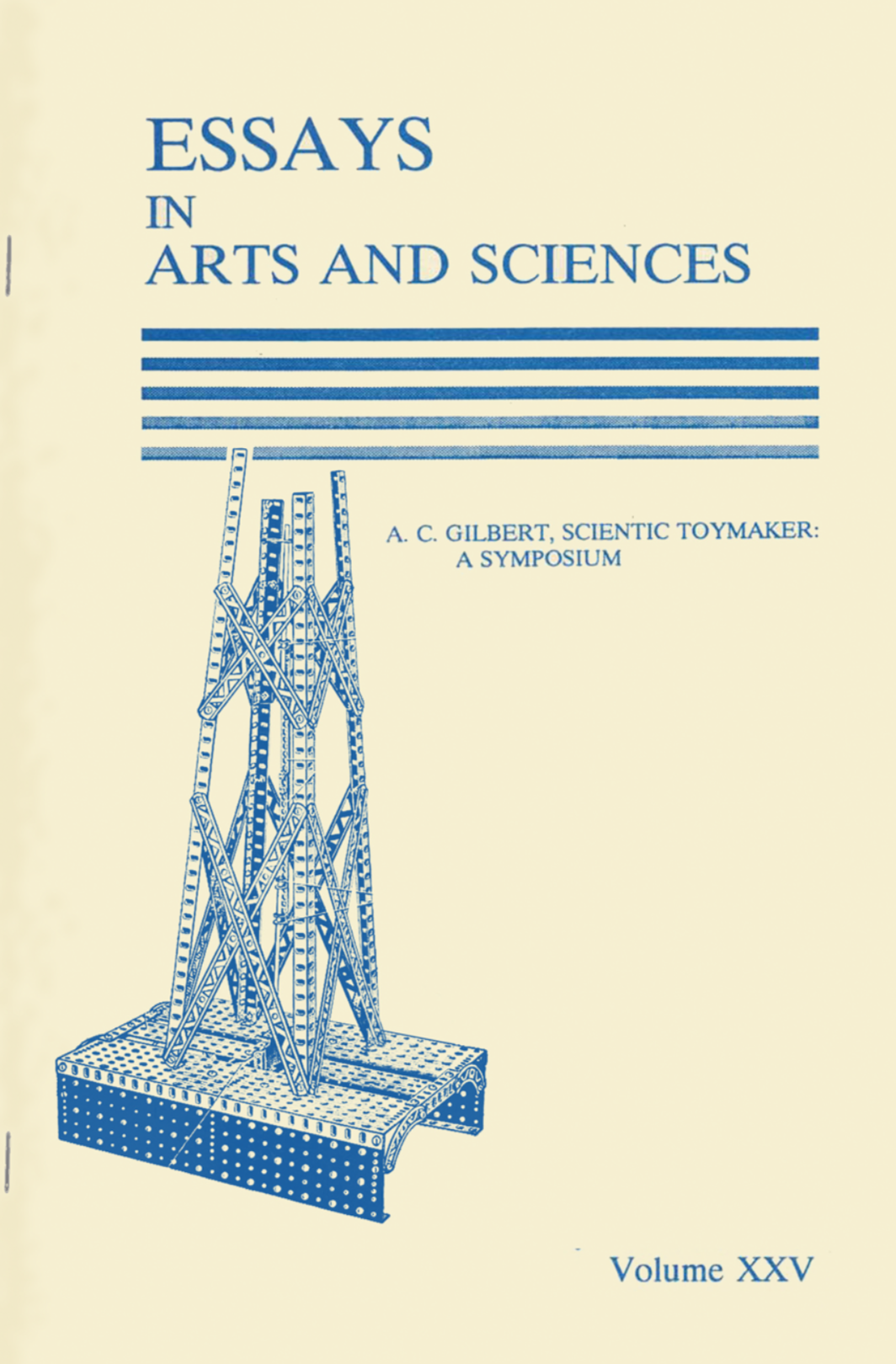.
Erector
Returning to the territory charted out by the exhibit Edmund Leo Petrie and his Contemporaries, these writings further grapple with the aftermath of A.C. Gilbert and his Erector Set. In particular they shine a a light on a very specific inheritor of the Gilbert legacy: the collectors, those lonely, greying men who continue to obsess over their childhood Erector Sets. They attend Gilbert conventions in hotel conference rooms, post pictures of their latest models to online forums, and maniacally create catalogs of every Gilbert kit, toy and Erector part that has ever been created. If early advertisements for the Erector Set featured images of children building miniature steel structures with the prophetic statement “Boys Today— Men Tomorrow!” emblazoned beneath them, these collectors are those for whom the coming of tomorrow was cause for mourning, not celebration. Without the confidence required to perform Gilbert’s script of engineering know-how, they were unable to translate their mastery of construction toys to the messy realities of actual life. They chose instead to misread the model as reality, shunning a disappointing adulthood in favor of the hermetic, knowable world of their childhood toys.The great sadness underlying the Gilbert collector is explored through two interrelated texts. The first, “The Fall of Erector Tower,” takes the form of a transcription of the keynote address for the Eli Whitney Museum’s A.C. Gilbert Scientific Toymaker: A Symposium. In 1978, Erector Tower—a steel radio tower that, due to its resemblance to a giant Erector model, served as a kind of billboard for the Gilbert toy factory—was destroyed by a powerful wind storm. The speaker, an obsessive Gilbert scholar, uses this event as a lens through which to tell the tale of the economic fall of the Gilbert toy company. He lays this collapse at the feet of its then-president Al Gilbert, A.C.’s timid, scholarly son. In an act of self-incriminating projection, our speaker argues that it was Al’s inability to adopt his father’s assertive, world-making personality that led to the end of this once grand toy empire.
The second text, “Erector Tower Parts Wanted,” burrows even deeper into the lonely psychology of the Gilbert fan. No conference-attendee, its author Frank B. is writing from the solitary station of a home computer. He, too, however, is ruminating on a tower: in honor of the fortieth anniversary of the real Erector Tower’s falling, he wishes to build a tribute model, but is prevented from doing so by his misplacement of two key pieces of his Erector Tower kit. Seeking to remedy this incompletion, Frank turns to the A.C. Gilbert Heritage Society, an online community of Erector collectors. In a series of message board posts, we read his increasingly confessional entreaties, as his distress over his missing Erector parts causes him to ruminate on his distant father, his dreams of a utopic childhood, and his lost, lonely adult life.

